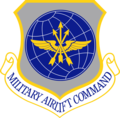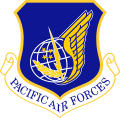| 37th Helicopter Squadron | |
|---|---|
 A UH-1N belonging to the 37th Helicopter Squadron lands as 90th Security Forces Group move into place during an exercise that was part of the Nuclear Surety Inspection. | |
| Active | 1952–1955; 1966–1972; 1973–present |
| Country | United States of America |
| Branch | |
| Type | Squadron |
| Role | Missile Field Support Search and rescue |
| Part of | Air Force Global Strike Command |
| Garrison/HQ | F.E. Warren Air Force Base, Wyoming |
| Engagements | Korean War Vietnam War [1] |
| Decorations | Presidential Unit Citation Air Force Outstanding Unit Award Republic of Korea Presidential Unit Citation Republic of Vietnam Gallantry Cross with Palm |
| Insignia | |
| 37th Helicopter Squadron emblem (approved 30 November 1988) [1] |  |
| Tail Code | FE |
The 37th Helicopter Squadron is a United States Air Force unit assigned to the 582d Helicopter Group in support of the 90th Missile Wing located at Francis E. Warren Air Force Base, Wyoming. The unit is tasked with flight operations in support of the operation and security of F.E. Warren's intercontinental ballistic missile complex as well as search and rescue missions. The unit operates the UH-1N Huey helicopter.






